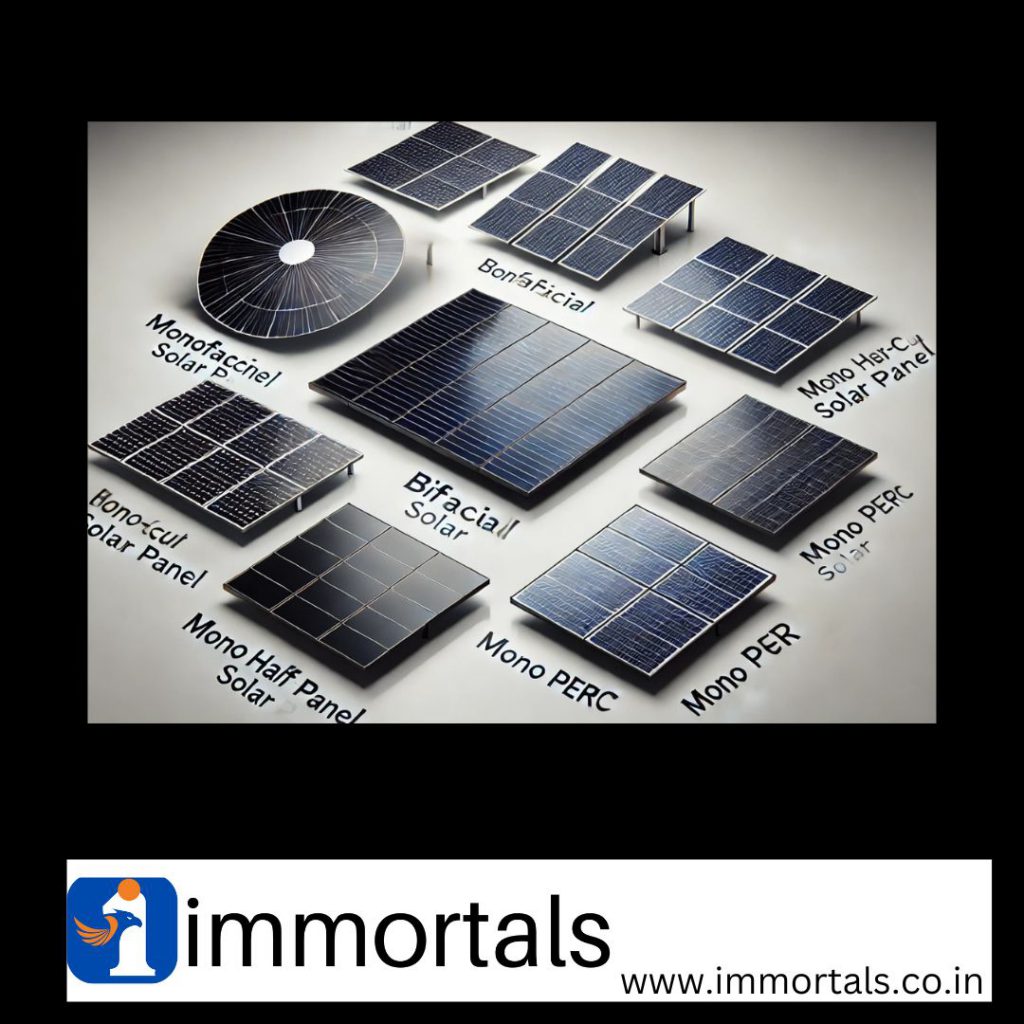India’s solar energy sector is rapidly evolving, with several advanced technologies being adopted to meet the country’s growing energy demands. The solar panels used in India today come in various types, each offering unique benefits tailored to different requirements and environmental conditions.
Types of Solar Panels in India
1. Monocrystalline Solar Panels
Monocrystalline panels are made from a single silicon crystal, known for their high efficiency and sleek black appearance. They perform exceptionally well in low-light conditions and are ideal for installations with limited space. However, they are relatively more expensive.
2. Polycrystalline Solar Panels
Polycrystalline panels are made by melting multiple silicon crystals, giving them a distinctive blue hue. These panels are cost-effective and perform well in high-temperature environments, making them suitable for many Indian climates. They have a slightly lower efficiency compared to monocrystalline panels and require more space for installation.
3. Mono PERC Solar Panels
Mono PERC panels are an advancement of monocrystalline technology, featuring an additional reflective layer that enhances efficiency, especially in low-light conditions. They are suitable for rooftops with space constraints but come at a higher cost than polycrystalline panels.
4. Bifacial Solar Panels
Bifacial panels can absorb sunlight from both sides, increasing energy output when installed on reflective surfaces. They offer higher energy production but require specific installation setups to maximize benefits and are more expensive.
5. DCR (Domestic Content Requirement) Solar Panels
These panels are manufactured entirely in India and comply with government standards. They are often eligible for subsidies and are designed specifically for Indian conditions, though efficiency can vary.
TOPCon Solar Panels: The Next Frontier
TOPCon (Tunnel Oxide Passivated Contact) technology is a significant advancement in solar cell design, offering enhanced efficiency and performance beyond traditional PERC cells.
Key Features of TOPCon Technology
Enhanced Efficiency: TOPCon cells can achieve conversion efficiencies up to 28%, surpassing traditional solar cells. This improvement is due to reduced electron recombination at the surface, facilitated by passivated contacts.
Reduced Degradation: TOPCon cells exhibit lower first-year degradation rates (approximately 1%) compared to PERC cells (around 2%), ensuring sustained performance over time.
Superior Low-Light Performance: These cells maintain high energy output even under low-light conditions, making them suitable for diverse environments.
Market Outlook
The market share of TOPCon technology in India is expected to grow significantly, potentially reaching up to 50% in the near future. This growth is driven by the technology’s superior efficiency, durability, and the Indian government’s push for advanced solar solutions to meet its renewable energy targets.
Conclusion
India’s adoption of various solar panel technologies, including the advanced TOPCon technology, reflects its commitment to expanding renewable energy capacity. With ongoing government support and advancements in solar technology, India is poised to become a global leader in solar energy production

